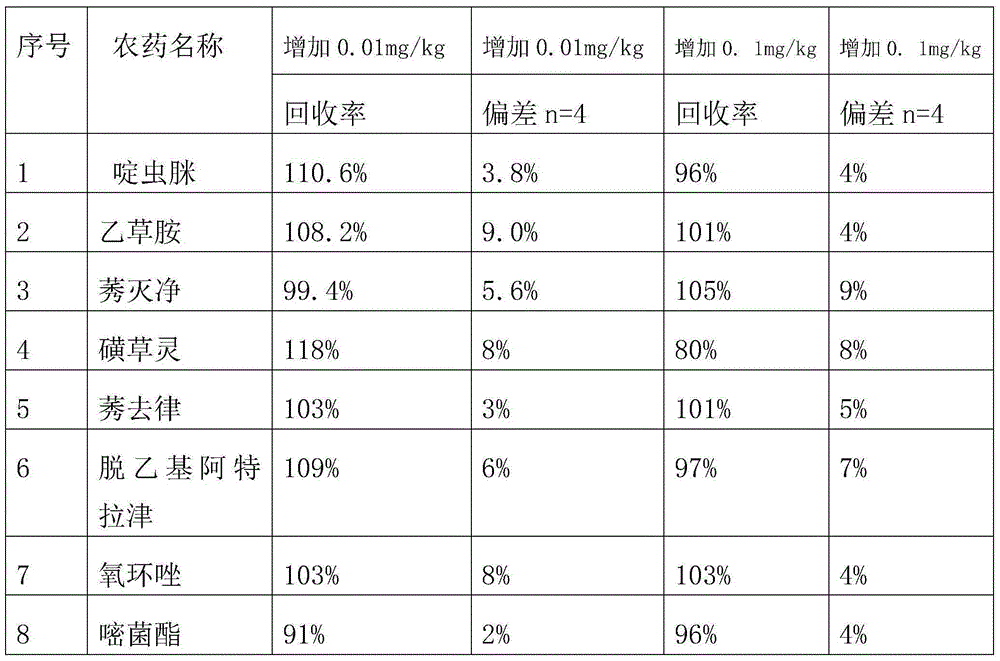Method used for detecting fruit pesticide residue
A technology for pesticide residues and fruits, applied in the field of detection of pesticide residues in fruits, can solve the problems of complex detection process, harsh experimental conditions, and large initial investment, and achieve good sensitivity and linear range, high precision and repeatability, and meet the detection requirements. desired effect
- Summary
- Abstract
- Description
- Claims
- Application Information
AI Technical Summary
Problems solved by technology
Method used
Image
Examples
Embodiment 1
[0015] Embodiment 1: The present invention provides a method for detecting fruit pesticide residues, comprising the following steps: Step a: Rinse the sample to be detected with clear water and cut it into 4*4mm block fragments;
[0016] Step b: Take 5g-15g fragment samples and add them to a centrifuge tube containing anhydrous sodium acetate and anhydrous magnesium sulfate, then add acetic acid acetonitrile solution, vibrate vigorously, perform ultrasonic extraction, and then centrifuge;
[0017] Step c: Put the acetonitrile extract obtained after centrifugation into a centrifuge tube containing 2-5g of purifying agent, place the centrifuge tube on a shaker for 5 minutes, let it stand for 5 minutes, draw the upper layer solution, and directly insert it into the syringe type Filter, filter to remove suspended matter in the solution, and collect the filtrate in a test tube;
[0018] Step d: place the test tube containing the filtrate in a water bath with a temperature of 40 deg...
Embodiment 2
[0021] Other steps are the same as in Example 1. In step b, take 10 g of fragment samples, add them to a 60 ml centrifuge tube containing 2 g of anhydrous sodium acetate and 8 g of anhydrous sodium sulfide, then add 20 ml of 1% acetic acid acetonitrile solution, shake vigorously for 2 min, and ultrasonically After extraction for 20 min, centrifuge at 5000 r / min for 2 min. In said step c, the cleaning agent is potassium persulfate.
Embodiment 3
[0023] Other steps are the same as in Example 1. In step b, take 5 g of fragment samples, add them to a 60 ml centrifuge tube containing 2 g of anhydrous sodium acetate and 8 g of anhydrous sodium sulfide, then add 20 ml of 1% acetic acid acetonitrile solution, shake vigorously for 2 min, and ultrasonically After extraction for 20 min, centrifuge at 5000 r / min for 2 min. In said step c, the cleaning agent is potassium persulfate.
PUM
 Login to View More
Login to View More Abstract
Description
Claims
Application Information
 Login to View More
Login to View More - R&D
- Intellectual Property
- Life Sciences
- Materials
- Tech Scout
- Unparalleled Data Quality
- Higher Quality Content
- 60% Fewer Hallucinations
Browse by: Latest US Patents, China's latest patents, Technical Efficacy Thesaurus, Application Domain, Technology Topic, Popular Technical Reports.
© 2025 PatSnap. All rights reserved.Legal|Privacy policy|Modern Slavery Act Transparency Statement|Sitemap|About US| Contact US: help@patsnap.com

